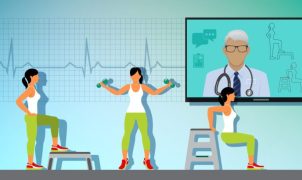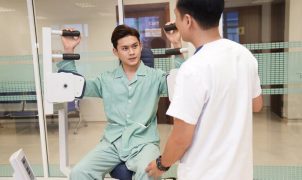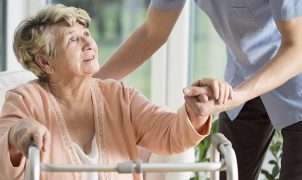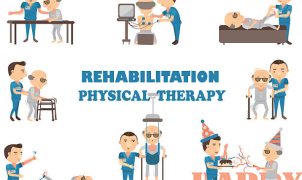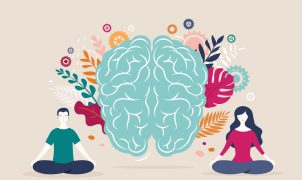Functional restoration involves one or more combined medical techniques to provide reliable and effective treatment, capable of significantly improving mobility for individuals with disabilities, those recovering from injuries, or preventing complications after surgery. Here is information on 10 common and highly effective functional restoration methods currently yielding favorable results.
1. Physical Therapy
Often misconstrued as synonymous with functional restoration, physical therapy encompasses various scientifically based methods to aid medical rehabilitation. Utilizing physical principles such as mechanical exercise, ultrasound, laser therapy, and heat treatments, physical therapy helps the body recover diminished functions, reduce pain, improve physical fitness, and indirectly enhance the mental well-being of patients without or with limited surgical intervention. Recognized by the American Physical Therapy Association (APTA) as highly effective, especially for patients with physical injuries or disabilities, physical therapy is extensively applied in sports medicine for athletes to alleviate muscle tension and recover muscle strength.

2. Seawater Therapy (Thalassotherapy)
Developed in the 1860s by Dr. Jacques de la Bonnardière in France, Thalassotherapy utilizes various resources from the sea, such as seaweed, marine mud, and, most importantly, seawater, to treat joint problems and injuries. It includes seawater baths, mechanical massages with marine-based products, breathing sea air to enhance respiratory function, and engaging in beach-related sports like running, swimming, or beachside yoga. Studies have demonstrated the appropriateness of seawater therapy for mild pathological conditions and symptom prevention.
3. Light Therapy
Exposure to sunlight during suitable periods has healing and restorative effects, stimulating cell production, particularly in the synthesis of Vitamin D beneficial for joint health. Sunlight energy therapy is encouraged in bone and joint disease treatments. While the harmful effects of UVA, UVB, or ultraviolet rays are well-known, harnessing the positive energy from sunlight contributes to the body’s natural recovery mechanisms, promoting bone health, improving mood, enhancing visual acuity, boosting brain activity, reducing asthma symptoms, and supporting reproductive health.
4. Speech Therapy
Speech therapy is a unique but essential treatment, as a significant proportion of the population requires communication disorder intervention at some point in their lives. In Vietnam, approximately 4.5 million people may benefit from speech therapy due to various factors, including congenital conditions, hearing loss, Parkinson’s disease, strokes, intellectual disabilities, or language and speech disorders. Speech therapists assess, diagnose, and help patients restore their functions, improve communication fluency, prevent language and speech disorders, and enhance daily activities. In severe cases where verbal communication is challenging, alternative communication methods such as sign language or written communication are taught.
5. Multisensory Environment Therapy
Effective for children with autism spectrum disorder (ASD), multisensory environment therapy addresses difficulties in sensory processing. The brain’s ability to adapt and improve its function is exploited through targeted therapy, focusing on regulating sensory systems such as vestibular, visual, auditory, gustatory, and tactile senses. Children with ASD, as well as those requiring multisensory therapy, learn to perceive and manage sensations, gradually restoring sensory functions and evaluating the surrounding world through enhanced sensory awareness.
6. Deep Functional Restoration
Common methods for deep functional restoration include post-surgery recovery, respiratory physical therapy, Shockwave Therapy, and Magnetic Field Therapy. These approaches are primarily recommended for severe cases requiring urgent intervention due to the severity and urgency of the medical condition, or for patients unable to actively participate in rehabilitation exercises. Deep functional restoration often involves the use of advanced medical equipment, support devices, and continuous monitoring during hospital stays or specialized clinics.
7. Wheelchair Training
Wheelchair usage serves as a means of supporting the body and facilitating easy movement for patients, minimizing the consequences of immobility or prolonged lying down. It allows patients to reintegrate into daily activities and participate in family and social events in cases such as quadriplegia, paralysis of both legs, unhealed lower body wounds, or muscle weakness preventing the support of body weight. Patients learn how to use, control, and manage wheelchairs independently, providing a means of movement without dependence on others. Safety skills during wheelchair use are crucial, and specialists and technicians provide guidance to ensure the patient’s safety during daily activities.
8. Deep Stretching Therapy
Stretching is a technique used to lengthen shortened soft tissue structures due to reduced elasticity, flexibility, and loss of resilience. Most deep stretching restoration methods require assistance from medical devices, such as the latest medical equipment like spinal traction machines, spinal traction beds, or cervical traction seats. These are typically prescribed for patients experiencing chronic back pain, acute nerve root compression, spinal deformities, herniated discs, or disc prolapses. Specific applications, such as Spinal Traction, use mechanical force to act vertically on the spine, stretching the intervertebral spaces and achieving the intended therapeutic effect. Participants in deep stretching therapy benefit from nerve function restoration, recovery from external trauma, and overall improvement in bone and joint functions, especially in the spine.
9. Mind-Body Support Skills
Integrating physical and mental health is a crucial aspect of the functional restoration process. Often overlooked, incorporating activities such as meditation or specific yoga exercises into the rehabilitation regimen provides emotional comfort, reduces stress, and accelerates the recovery process. This is particularly important for patients facing paralysis or congenital disabilities, as mental resilience significantly influences both physical and mental health. Practices like yoga and meditation contribute to emotional regulation, improved mood, and a positive mindset, enhancing the overall recovery process.
10. Physical Education
Physical education is a vital component of rehabilitation to instill motivation for exercise. Good physical condition is necessary for the body to recover from trauma or diminished functions effectively. The body operates like a sophisticated mechanical machine, smoother, and more efficient with continuous activity. Patients need guidance, sharing, and the assimilation of useful knowledge about personal health through physical exercise. When combined with gentle physical activities like walking, in-place exercises, or simple movements done correctly, physical education significantly activates the functional recovery mechanism, yielding quicker and more effective results.
The benefits of physical exercise are excellent for the health of individuals undergoing functional restoration. As patients absorb and apply this knowledge, they become more self-reliant, fostering a positive lifestyle in various situations, making life easier and eliminating the burden of dependence on family and society.
In conclusion, the synergy of various therapeutic methods contributes to effective functional restoration, encompassing physical, psychological, and educational approaches. Tailoring these methods to the individual needs and conditions of patients ensures a holistic and personalized approach to their recovery journey.
Cre: gymaster


